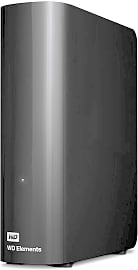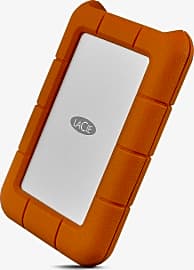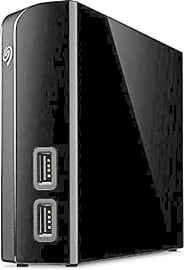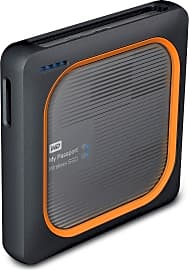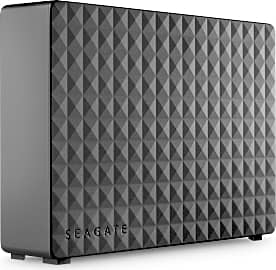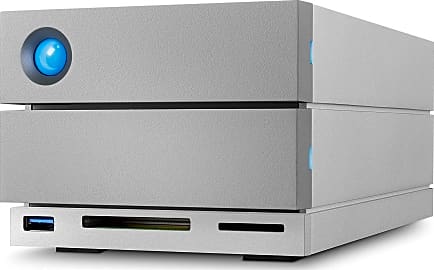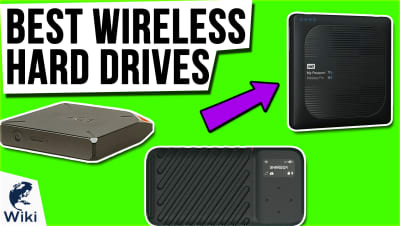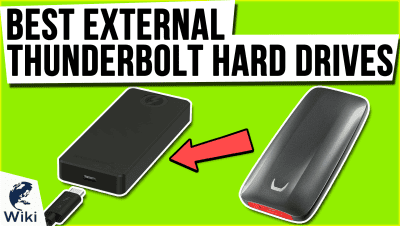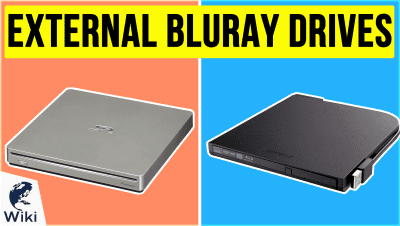The 8 Best External Hard Drives

This wiki has been updated 41 times since it was first published in March of 2015. If you need a lot of external storage space but don't want to spend a fortune, an SSD might not cut it, and you should consider a portable hard drive instead. Today's models are as fast as HDDs have ever been and come in a variety of form factors and capacities, and with helpful features like rugged constructions, hardware encryption, USB bus-powered designs, and compact form factors. When users buy our independently chosen editorial recommendations, we may earn commissions to help fund the Wiki.
Editor's Notes
December 24, 2020:
They aren't especially fast, but external HDDs offer a ton of storage space for the money, particularly the Seagate Backup Plus and Seagate Expansion. The G-Technology G-Drive is considerably more expensive but promises to work seamlessly with Apple computers, and the LaCie 2big is intended for extremely large collections and offers easily configured RAID support. The Western Digital Elements and Western Digital My Passport happen to be two of the most popular, and the LaCie Rugged is great for keeping documents, videos, photos, and games safe if you're on the road.
May 23, 2019:
Besides the additional storage space, external hard drives offer several benefits over other types of media. These include ease of connectivity, plug-and-play operation, lightning-fast transfer speeds, portability, and durability. Furthermore, these devices can withstand extreme environments, so you aren't limited in the technology you can bring along during your travels. All of these values are important to consider with these devices and I did my best to incorporate them in my updates. I made quite a few changes to this one.
I added the Samsung X5 due to its integrated Thunderbolt 3 technology and non-volatile memory express interface, which makes this little powerhouse one of the fastest in its class compared to the competition (read and write speeds of up to 2,800 and 2,300 MBps). Its rugged construction can also withstand drops of over 6 feet. I know from personal experience that impact protection is very important when traveling with lots of sensitive data. A similar design is built into the Silicon Power Armor A60 with its high-impact rubber casing, integrated suspension system, and water-resistant construction. Included the Seagate Expansion as an all-around dependable desktop option with a large 10-terabyte capacity and extra-long USB cable. I thought the Fantom GForce was a sleek and reliable option, thanks to an internal motor running at up to 7,200 RPM for rapid response times. One of the most annoying things for me when accessing files is the delay I often experience when double clicking on them when they're being stored on a slow external drive or computer. Added the LaCie Mobile for its one-click backup function and because it requires no reformatting. The Oyen Digital Novus comes with an impact-resistant rubber sleeve and a convenient vented design to keep it cool. Included the Western Digital My Passport Go for its integrated cable and compact size, making it ideal for travel. Finally, I wanted to include at least one drive dedicated to console gamers, so the Seagate Game Drive was definitely the product of choice, offering a 2-terabyte SSD flash storage capacity for ensuring speed and smooth multitasking.
When Driving Faster Is Better
On the rare occasion that you do need to use this software, you can simply plug in your external hard drive to access it.
An external hard drive is a storage device that connects to your computer, usually via USB port. It uses flash memory and does not require a power source in order to retain the information.
Some advantages to using external storage, as opposed to other external storage devices such as CDs and DVDs, are that they are more durable and generally small and lightweight, making them extremely portable. They transfer data much faster than other forms of external storage.
An external hard drive is a more advanced version of a flash drive, functioning as a hard drive for storing files and backing up entire computer programs. Some users utilize external hard drives for specific files like work documents, photos, or music, while others prefer to use the device to back up an entire system on a regular basis.
Data transfers on external hard drives are simple, often allowing you to utilize the basic drag and drop feature for transferring chosen files. Depending on the size of the transfer, files can often be moved in a matter of minutes. Some users choose to leave the external hard drive plugged into their laptop or desktop for continuous data backup.
External hard drives are great for storing software and other data that doesn't need to be accessed often and would only take up space on the computer. On the rare occasion that you do need to use this software, you can simply plug in your external hard drive to access it.
External hard drives are excellent for protecting your files against damage or theft. If something were to happen to your laptop, your external hard drive would still have all of your information safely stored, provided it is stored in a separate location.
Check Before You Buy
In a world where the Internet rules all and technology is advancing at lightning-fast speeds, saving and protecting data is an important part of life. Even if you use the cloud, it’s still a good idea to back up data to an external hard drive. That is why it’s important to carefully consider what type will meet your needs before shelling out the cash.
You will need to compare the external hard drive’s transfer speed capabilities to that of your computer’s input.
First, consider the storage capacity that you need. Are you planning to store a few files or do you need regular backups of an entire system? Photos and videos tend to be larger than your average documents, so a hard drive with 1TB or 2TB of storage is a good idea. If you only need to back up a few photos and documents, something smaller will suffice.
Second, take a look at the transfer speed. You will need to compare the external hard drive’s transfer speed capabilities to that of your computer’s input. If the hard drive uses USB 3.0 to transfer files, but your computer only has USB 2.0 connections, you will not get the full advantage of fast data transfers.
Third, think about what type of portability you need. External hard drives that weigh more tend to cost a bit less than their streamlined counterparts. If you plan to stick close to home and are interested in saving money, a larger, cheaper model will probably work. However, if you are constantly on the go and need to take your files along, it is worth it to pay more for a slimmer device.
Next, check the compatibility. Some external drives are only compatible with PCs, others with Mac, and others are compatible with both. Always make sure that your chosen device is compatible with your computer.
Finally, find out how easy your external hard drive will be to use. Some require additional software installation before you can begin using them, while others have the software built into the device. If you are just getting started with an external hard drive, go with the one with previously installed software to make your life easier. It’s also not a bad idea to pick one with a long-term warranty.
A Brief History Of The External Hard Drive
The original hard drive was requested by the United States Air Force and created by IBM in 1956 and was called the RAMAC 305. These original computer hard drives had to be kept outside of the computer itself simply because they were too large. IBM wanted users to be able to save files and other work performed on a computer electronically, so they created this hard drive using fifty aluminum disks. It could only hold five megabytes of data.
Over time, CD-ROM drives were developed and used to store files and software programs.
In 1962, IBM released their 1301 hard drive model prompting other computer companies to begin selling their own external hard drives. In 1967, the floppy disk was introduced, revolutionizing the way files were stored externally. In 1982, Sony improved on the original floppy disk by making it smaller and more portable.
Over time, CD-ROM drives were developed and used to store files and software programs. Once flash memory was invented external storage was changed forever, prompting the creation of portable external hard drives. These connect to computers often using the USB port and can transfer data quickly and easily.
As time endures, people continue to need to store, send, and transfer data to various devices. Private citizens, businesses, and government institutions alike are all eager to backup their important data in a way that protects it from loss and theft. As a result, external hard drives continue to soar in popularity, and wireless external hard drives have even made an appearance.


